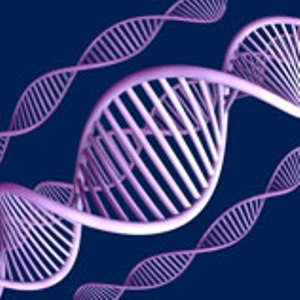
Geneticists around the world are learning to perform an extraordinary new surgery of the most delicate kind – literally snipping defective pieces out of a strand of DNA with molecular “scissors” called CRISPR.
The reason they’re quite so excited about this is they’re hopeful CRISPR can soon be used to snip out the mutations, or defective genes, that cause Down syndrome, or cystic fibrosis, or any of a host of other genetic disorders, cancers and maybe also viral infections like HIV/Aids.
"The technology promises, almost miraculously, to be a targeted ‘curing’ of the defective genetic code in individuals with a genetic/inherited condition," says Professor Raj Ramesar, principal Investigator at the Division of Human Genetics, University of Cape Town.
"It’s the kind of claim you'd expect to hear from quacks and ‘snake oil merchants’. But this remarkable discovery is testimony to the value of research – it's only on the back of billions of research dollars that something like this could emerge."
A “one size fits all” therapy
It isn't the first or only method of gene repair therapy that’s been developed, but the CRISPR technology, says Ramesar, is so special because, unlike previous methods which were more laborious and could only target one kind of cell in the body, it appears to be a "one size fits all delivery", adaptable for different tissues. The procedure also seems relatively simple to perform.
In other words, the heady prospect is that it may soon be possible to use CRISPR to "fix" different DNA abnormalities at many different sites in the body – in the retina, for example, in sufferers of the progressive vision loss disease retinitis pigmentosa, or in cancerous skin cells.
Miraculous, but no miracle cures just yet
Exciting as the development may be, CRISPR won’t be delivering instant cures just yet.
Ramesar says, from his initial impressions of the literature, that it would seem that localised, accessible abnormal tissue (as in the retina or skin) could be targeted more easily.
Conditions affecting the body more systemically, however, such as certain developmental syndromes, or central nervous system disorders, might be problematic in terms of getting the repair technology into enough of the target cells in that tissue to make an effective difference.
"It may also depend on the stage one attempts to carry out the therapy, in terms of the patient’s age and level of advancement of the disease," says Ramesar.
He stresses that his lab has not yet tried the technology, "but we are preparing to do so soon."
When work does start in South Africa on testing CRISPR, as is happening in research centres overseas, it will be on human cell lines carrying known genetic defects – in other words, tissues cultured in the laboratory which scientists can use to carefully check to see if mutations have been successfully removed.
Only then might the technique be ready for the next step: actual therapeutic use in human patients to fight genetic disease.
Can CRISPR “fix” embryos?
Once CRISPR has been demonstrated to be safe and effective in somatic tissue (i.e. tissue that has already differentiated into specific types of cells such as retinal or skin cells), it then might be considered for germline therapy – repairing genetic mutations early in the sperm cells, egg cells, or the embryo, where tissue is not yet differentiated – effectively stopping genetic diseases in their tracks.
This prospect has raised concerns that such extraordinary powers to tinker with DNA could lead to eugenics i.e. the suppression not only of diseases, but of certain normal genetic characteristics deemed undesirable by some – an ambition historically linked with racist agendas.
The other anxiety about genetic manipulation in germ cells is that it could lead to unforeseen errors that would express themselves later, perhaps as birth defects. However the great improvement in precision offered by the CRISPR technique should greatly help to lower the risk of such errors, and allay fears of taking this step.
More about CRISPR
CRISPR (pronounced “crisper”) is an acronym for Clustered Regularly Interspaced Short Palindromic Repeats – this refers to a specific repeated pattern found in the DNA of many bacteria.
The CRISPR technique was derived from a method that bacteria use to fight off invading viruses, which involves accurately snipping the viral DNA with an enzyme “scissors”. Scientists – most notably, Dr Jennifer Doudna’s team at the University of California, Berkeley – have adapted these scissors for use in other organisms’ cells, including human tissue. Instead of snipping the DNA of invading viruses (although it could be used for that too), scientists can guide the “scissors” to a defective gene on the cell’s own DNA and deactivate it.
Here Professor Malcolm White, Director of Research at the University of St Andrew’s, Scotland, makes CRISPR accessible to non-geneticists using an actual pair scissors and a stuffed toy bacterium:
A summary of Prof White’s key points:
- A virus injects its DNA into a bacterial cell. The viral DNA replicates and the cell bursts, releasing many viruses.
- Sometimes, though, a bacterial cell survives and incorporates a piece of viral DNA into its own DNA.
- The next time that same virus attacks, the bacterium uses the incorporated viral DNA to “recognise” the virus.
- It then uses an enzyme “scissors” to cut the viral DNA, thus deactivating it.
- Scientists have managed to repurpose the scissors for use in other types of cells (including cells in human lab-grown tissue).
- The scissors are packaged
and guided with a section of genetic code that recognises the defective part of
the DNA and cuts it. The defective section can then be replaced with normal
DNA.
Additional sources
Doudna et al (2013). Abstract. RNA-programmed genome editing in human cells.
Qi et al (2013). Abstract: Repurposing CRISPR as an RNA-Guided Platform for Sequence-Specific Control of Gene Expression.




 Publications
Publications
 Partners
Partners













